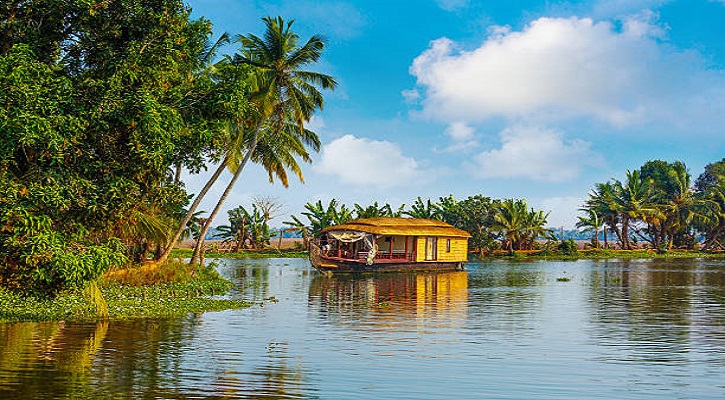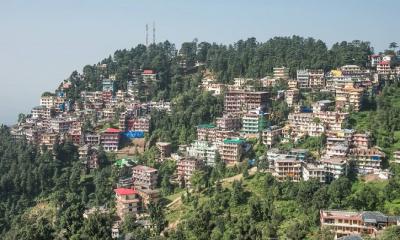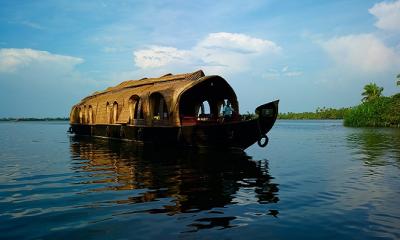
History of Kerala
- Women`s Corner
- July 25, 2022
According to the Sangam classic Purananuru, the Chera king Senkuttuvan conquered the lands between Kanyakumari and the Himalayas. Lacking worthy enemies, he besieged the sea by throwing his spear into it. According to the 17th-century Hindu mythology work Keralolpathi, the lands of Kerala were recovered from the sea by the ax-wielding warrior sage Parasurama, the sixth avatar of Vishnu (hence, Kerala is also called Parasurama Kshetram 'The Land of Parasurama' in Hindu mythology). Parasurama threw his ax across the sea, and the water receded as far as it reached. According to legend, this new area of land extended from Gokarna to Kanyakumari.
The land which rose from the sea was filled with salt and unsuitable for habitation; so Parasurama invoked the Snake King Vasuki, who spat holy poison and converted the soil into fertile lush green land. Out of respect, Vasuki and all snakes were appointed as protectors and guardians of the land. P. T. Srinivasa Iyengar theorized, that Senguttuvan may have been inspired by the Parasurama legend, which was brought by early Aryan settlers.
Read More: Why you should eat Greek yogurt for your breakfast?
Another much earlier Puranic character associated with Kerala is Mahabali, an Asura and a prototypical just king, who ruled the earth from Kerala. He won the war against the Devas, driving them into exile. The Devas pleaded before Lord Vishnu, who took his fifth incarnation as Vamana and pushed Mahabali down to the netherworld to placate the Devas. There is a belief that, once a year during the Onam festival, Mahabali returns to Kerala. The Matsya Purana, among the oldest of the 18 Puranas, uses the Malaya Mountains of Kerala (and Tamil Nadu) as the setting for the story of Matsya, the first incarnation of Vishnu, and Manu, the first man and the king of the region.
Ophir: Ophir, a port or region mentioned in the Bible, famous for its wealth, is often identified with some coastal areas of Kerala. According to legend, King Solomon received a cargo from Ophir every three years (1 Kings 10:22) which consisted of gold, silver, sandalwood, pearls, ivory, apes, and peacocks.
A Dictionary of the Bible by Sir William Smith, published in 1863, notes the Hebrew word for parrot Thukki, derived from the Classical Tamil for peacock Thogkai and Cingalese Tokei, joins other Classical Tamil words for ivory, cotton-cloth, and apes preserved in the Hebrew Bible. This theory of Ophir's location in Tamilakam is further supported by other historians.
Read More: Crescent Bacon Breakfast Ring
The most likely location on the coast of Kerala conjectured to be Ophir is Poovar in Thiruvananthapuram District (though some Indian scholars also suggest Beypore as a possible location). The Books of Kings and Chronicles tell of a joint expedition to Ophir by King Solomon and the Tyrian king Hiram I from Ezion-Geber, a port on the Red Sea, that brought back large amounts of gold, precious stones, and 'algum wood' and of a later failed expedition by King Jehoshaphat of Judah. The famous 'gold of Ophir' is referenced in several other books of the Hebrew Bible.
Cheraman Perumals: Portrait of the sword of Zamorins of Kozhikode, relating to the legend of Cheraman Perumal. The legend of Cheraman Perumal is the medieval tradition associated with the Cheraman Perumal's (literally the Chera kings) of Kerala. The validity of the legend as a source of history once generated much debate among South Indian historians. The legend was used by Kerala chiefdoms for the legitimation of their rule (most of the major chiefly houses in medieval Kerala traced its origin back to the legendary allocation by the Perumal).
According to the legend, Rayar, the overlord of the Cheraman Perumal in a country east of the Ghats, invaded Kerala during the rule of the last Perumal. To drive back the invading forces the Perumal summoned the militia of his chieftains (like Udaya Varman Kolathiri, Manichchan, and Vikkiran of Eranad). The Cheraman Perumal was assured by the Paradis (chief of Eranad) that they would take a fort established by the Rayar. The battle lasted for three days and the Rayar eventually evacuated his fort (and it was seized by the Perumal's troops). Then the last Cheraman Perumal divided Kerala or Chera kingdom among his chieftains and disappeared mysteriously.
Read More: Bacon, Egg, and Potato Breakfast Skillet
The Kerala people never more heard any tidings of him. The Paradise of Nediyiruppu, who later came to be known as the Zamorins of Kozhikode, were left out in cold during the allocation of the land and were granted the Cheraman Perumal's sword (with the permission to "die, and kill, and seize").
According to the Cheraman Juma Mosque and some other narratives, "Once a Cheraman Perumal probably named Ravi Varmab was walking with his queen in the palace, when he witnessed the splitting of the moon. Shocked by this, he asked his astronomers to note down the exact time of the splitting. Then, when some Arab merchants visited his palace, he asked them about this incident. Their answers led the King to Mecca, where he met the Islamic prophet Muhammad and converted to Islam.
It is assumed that the first recorded version of this legend is an Arabic manuscript of anonymous authorship known as Qissat Shakarwati Farmad. The 16th-century Arabic work Tuhfat Ul Mujahideen authored by Zainuddin Makhdoom II of Ponnani, as well as the medieval Malayalam work Keralolpathi, also mention the departure of the last Cheraman Perumal of Kerala into Mecca. The Maharajahs of the kingdom of Travancore in pre-Independence India would say at their swearing-in, "I will keep this sword until the uncle who has gone to Mecca returns".
Read More: Raw Mango Chutney
This article is taken from Wikipedia.





